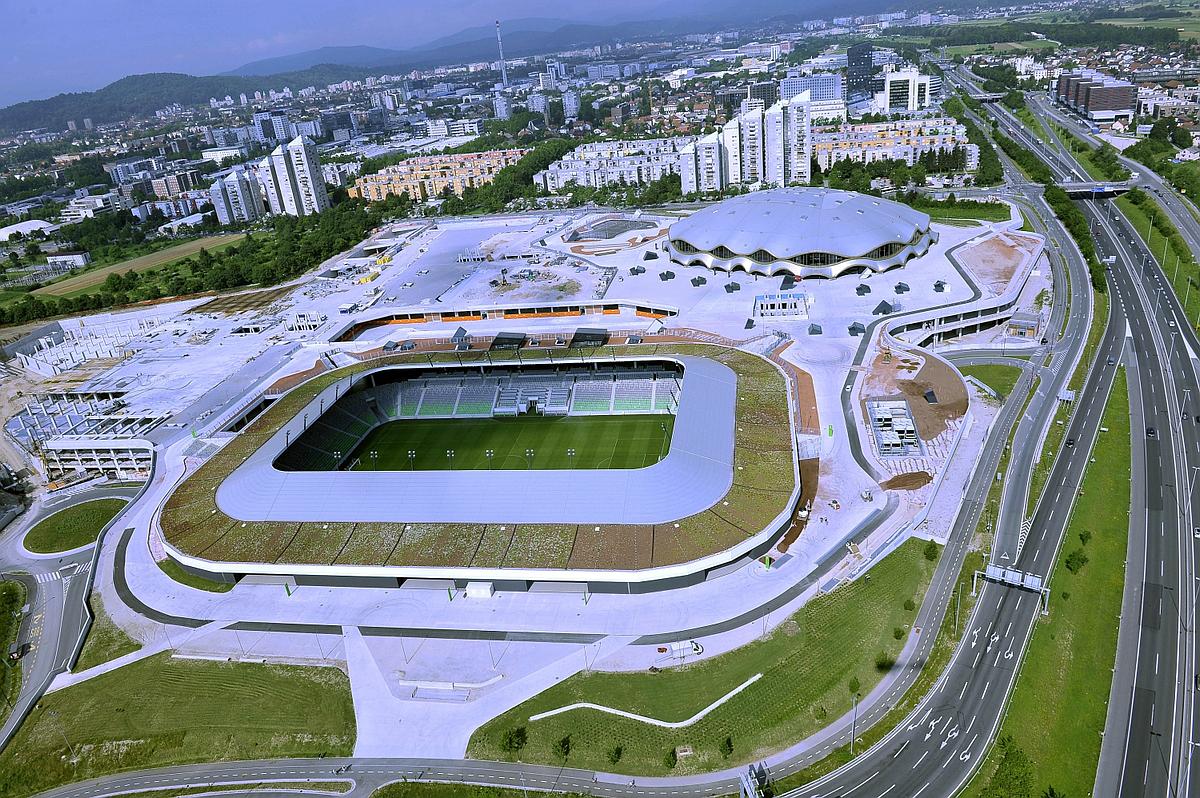
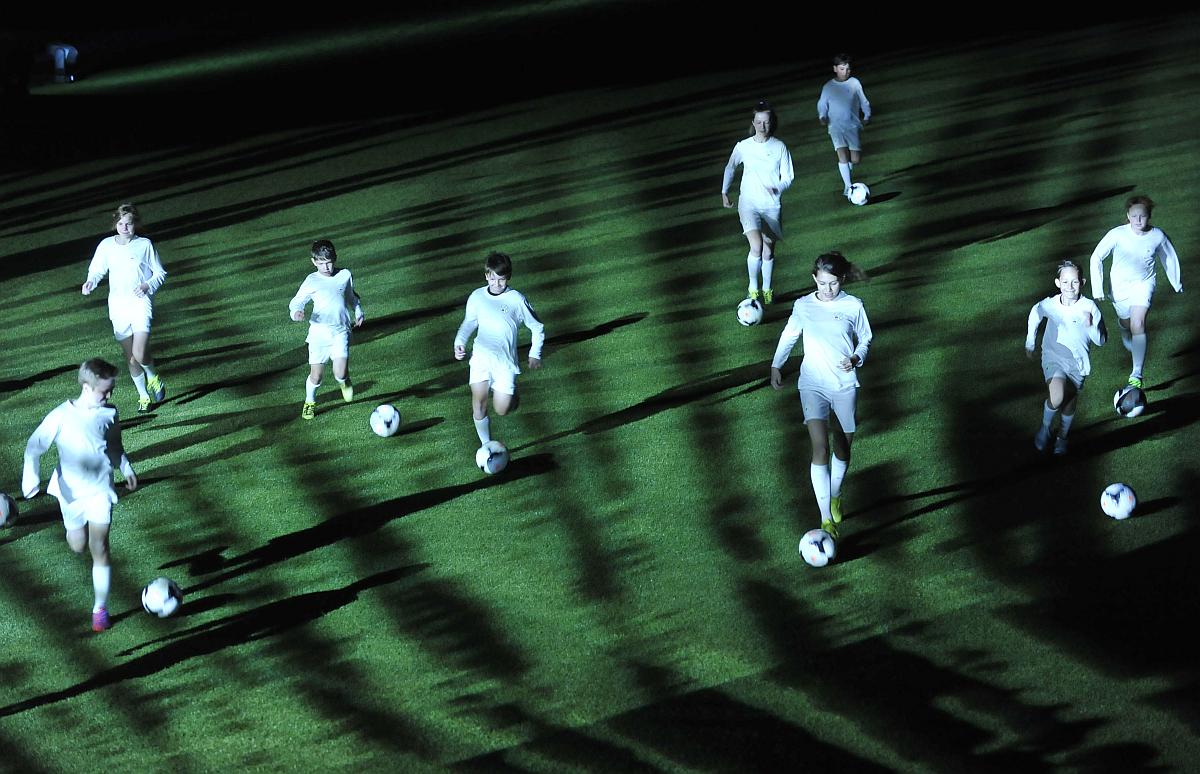
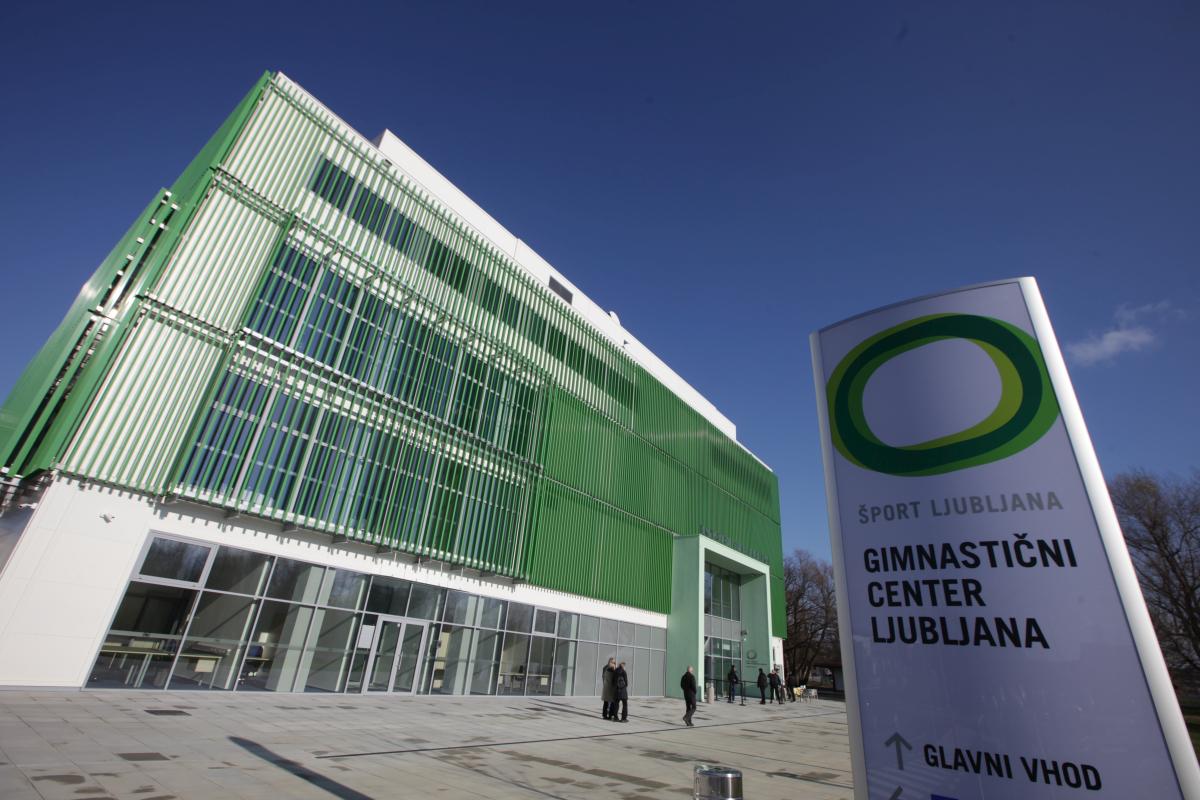
Ljubljana is truly a sports city. This year’s European Green Capital is proud of its sports halls, parks, pools and infrastructure, designed for the recreational needs of Ljubljana’s citizens and everyone who visits Ljubljana. The Ljubljana Institute of Sport is responsible for the majority of Ljubljana’s sports facilities, of which there are over a hundred. Several units operate under its auspices, whose renown has reached past the Slovenian border.
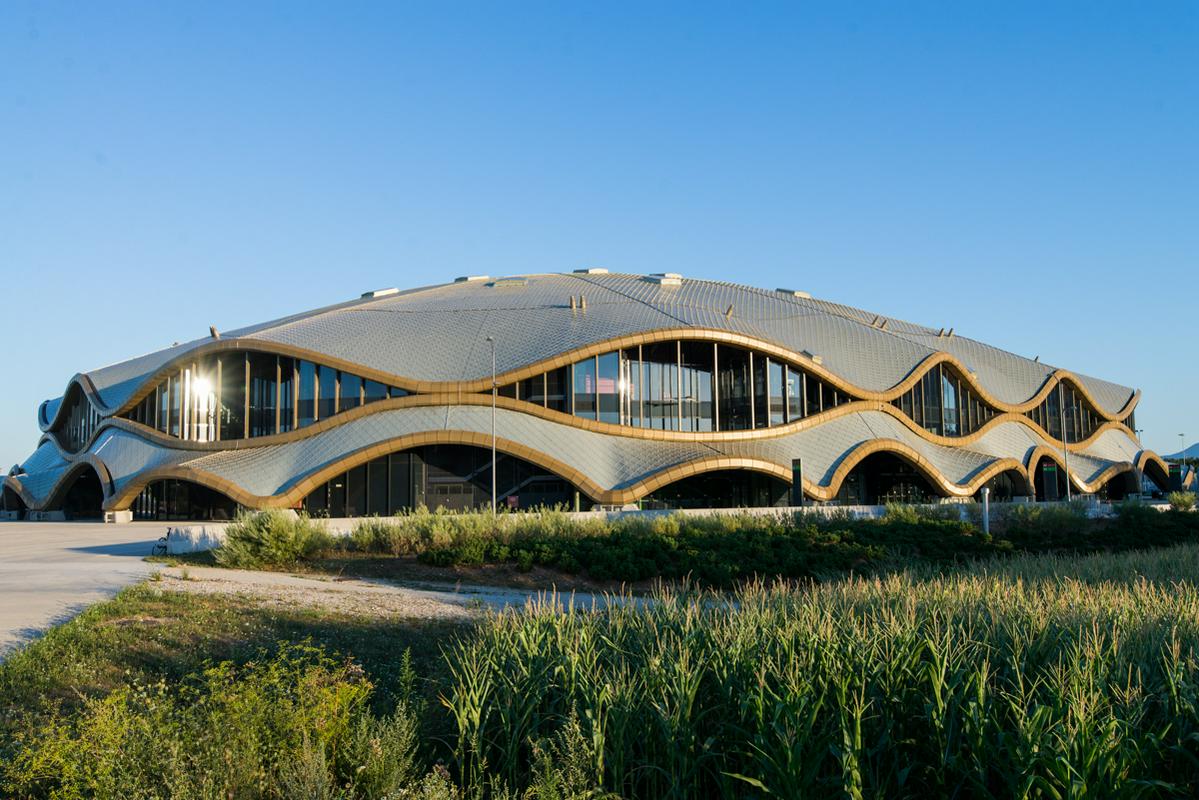

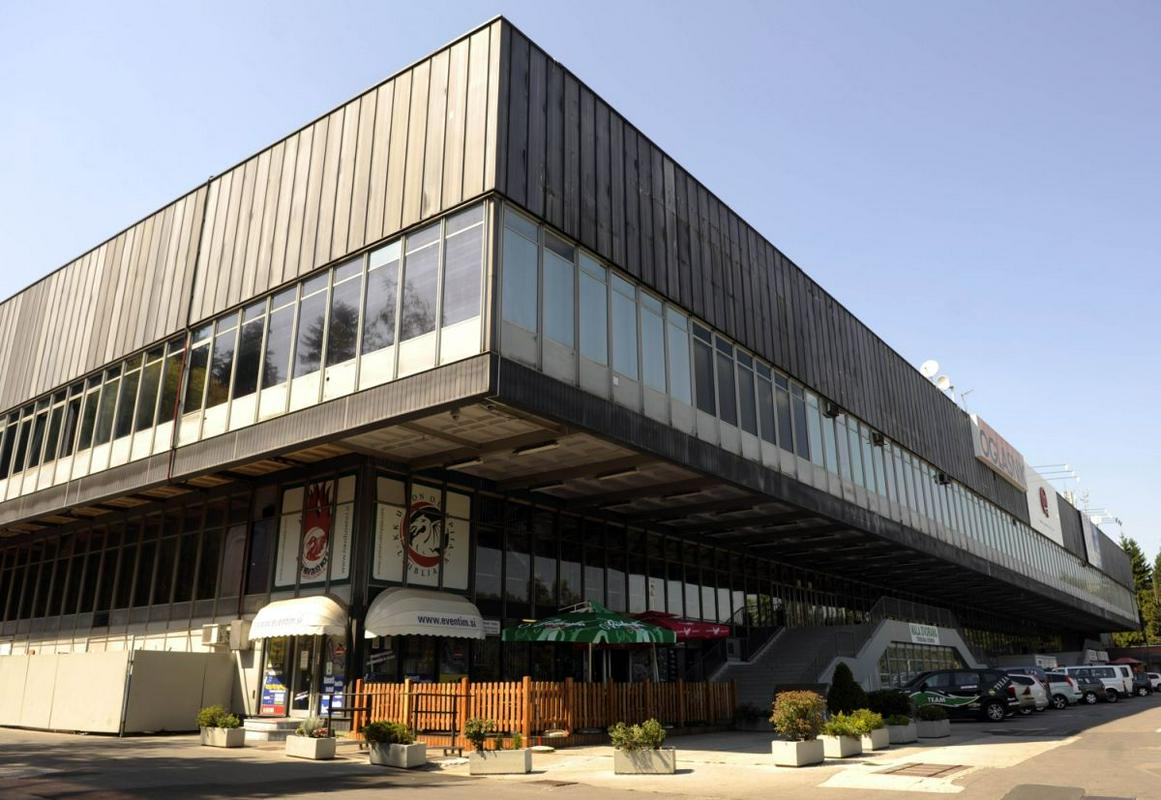


All year round, these venues offer the pleasure of sport not only to Slovenians, but also to visitors. As the infrastructure is well developed, sports tourism is on the increase. Let’s have a look at some of Slovenia’s legendary sports arenas and some that are on the way to becoming famous.
National football centre
“Very often, Slovenians, used to top-flight results by athletes, are not even aware of how big a success these results are for Slovenia, with its population of two million. In the sphere of sports, Slovenia is actually a superpower,” said Prime Minister Miro Cerar in a speech marking the opening of the National Football Centre. The National Football Centre was officially opened in May at the idyllic protocol and event facility at Brdo pri Kranju. The grounds are a natural treasure. A place with a more than 500-year tradition. As the national protocol facility it has provided hospitality to numerous statesmen and top-level international meetings.
The magnificent property, which is in fact a park, was once a place where the royal family sought peace and solitude and met with world-renowned politicians. The park complex at Brdo pri Kranju is now home to a modern National Football Centre. It took 14 months to build, with the state providing the building lease, and the Football Association of Slovenia (NZS) providing the funds and taking responsibility for the implementation of the entire project. The centre is a major addition to Slovenian football, featuring all sorts of options, and is one of the best things that has happened to Slovenian football in the era of the country’s independence.
It includes three natural grass football pitches, stands, and a multipurpose sports hall (locker rooms, fitness centre, wellness centre, reception hall, etc.). The NZS also has its own administrative building there. It is part of the Brdo protocol complex, and lies in beautiful natural surroundings, so it has already been given the nickname “the Pearl of Gorenjska”, Slovenia’s alpine region. How could it not, when it offers the opportunity to train football with a spectacular view of the Slovenian Alps?
“This extremely beautiful football centre is a model for Slovenia, Europe and the world for what is possible in football and for football, for people of all ages, from children to older folks, who like to kick a ball around. This shows that a country like Slovenia has not only appeared in three major tournaments, but that with good leadership and vision it is possible to accomplish even more in this beautiful country," said FIFA President Gianni Infantino at the opening ceremony, who as the general secretary of the Union of European Football Associations (UEFA) had already been involved in the construction of the centre at Brdo. Aleksander Čeferin, president of UEFA, stated that they had built a centre for a sport which has long been known as the “beautiful game”. The centre is the impetus for a new football culture in Slovenia and a home for more than 40,000 men and women who are involved in football, including recreationally, regardless of sex, race, creed or other circumstances.
Undoubtedly, Slovenian football players were the most pleased with their new training grounds. National team manager Srečko Katanec described it in ringing superlatives, and his team have already tried it out when preparing for their most recent international match. The pitches and auxiliary buildings are complete, and are not only attractive to the Slovenian national team, but to foreign teams which want to train in a natural environment. The construction of a sports-medicine facility is planned for the next phase, which will allow the centre to offer a comprehensive range of services for athletes from all over the world.
Ljubljana’s sports infrastructure
Ljubljana is truly a sports city. This year’s European Green Capital is proud of its sports halls, parks, pools and infrastructure, designed for the recreational needs of Ljubljana’s citizens and everyone who visits Ljubljana. The Ljubljana Institute of Sport is responsible for the majority of Ljubljana’s sports facilities, of which there are over a hundred. Several units operate under its auspices, whose renown has reached past the Slovenian border.
Gymnastics Centre
Let’s start with the newest – the modern Olympic and national Ljubljana Gymnastics Centre. The facility opened its doors last November, and its main function is the development and promotion of gymnastics disciplines. Gymnastics has always been very popular in Slovenia, and Slovenian gymnasts (Leon Štukelj, Miroslav Cerar, Lojze Kolman, Aljaž Pegan, Mitja Petkovšek) have achieved exceptional results. The facility provides first-rate conditions for training, and of course the opportunity to host top-flight international and national competitions.
The Ljubljana Gymnastics Centre includes a large gymnastics hall, stands, a warm-up area, locker rooms for recreational gymnasts and a gym for guided exercise, two sports halls with a modern fitness facility and an area for guided exercise, and of course a pub. Since the facility was designed for athlete training, it also has thirteen double-occupancy rooms and two single rooms, a large conference room and a sauna.
The total surface area of the competition and training areas is 1,951.5 m2. It is split into a gymnastics hall with permanently set-up training equipment and a hall for training in rhythmic gymnastics, which is also designed for competitions. The stands seat up to 400 visitors, and give them an excellent view of the events in the hall. The gymnastics equipment in the sports hall is available at all times, and gymnasts can train there without interruption. The rhythmic gymnastics hall can also be adapted for other sports, e.g. volleyball or basketball.
The fact that the centre offers accommodations which are suitable for athletes during their training preparations shows that it is a truly hospitable facility. In order to make their stay as comfortable as possible, they have access to a kitchen with an eating area, a multipurpose conference room and a sauna. Tennis courts, football pitches, an outdoor fitness course and a climbing wall can be found in the immediate vicinity of the centre. During the summer, visitors can cool off at the Kolezija municipal pool.
Stožice Centre
Undoubtedly the heart of sport in Ljubljana and Slovenia is Stožice Centre, the site of Slovenia’s largest stadium. Stožice is home to both large popular events and elite sporting events. The centre complex includes a football stadium and a multipurpose sports hall, and outdoor playing fields will soon be available to visitors.
The centre has a striking modern design, with a high degree of interaction between sporting and commercial activities. The Ljubljana facility was designed to contribute to the better health and well-being of all visitors to the centre. Stožice Centre opened its doors in August 2010. Since then, the centre has hosted world-renowned sports teams and numerous musical acts.
The stadium was designed above all for football fans and has a capacity of 16,038. The hall seats 12,484. Both the stadium and the hall are also designed to host concerts, exhibitions and other cultural events, and conventions.
Green areas adjacent to the stadium and the hall will be available for sports and recreation. The outdoor sports facilities will allow visitors to walk, run (year-round), use outdoor fitness equipment, play volleyball, football, basketball, etc., free of charge.
Hala Tivoli
Hala Tivoli (Tivoli Hall) is located nearly in the centre of the city, in Tivoli Park, and just at the edge of a wonderful forest which is part of the Tivoli, Rožnik and Šišenski Hrib Nature Park. The hall is over fifty years old. The mark that it has made on Slovenian society, particularly in the areas of sport and culture, have given it nearly cult status. “It was the first sports hall in the region and therefore it has a certain grandeur, a patina”, says Tatjana Polajnar, director of the Ljubljana Institute of Sport, which manages the facility.
Hala Tivoli was designed by architects Stanko Bloudek and Marjan Božič. Although the facility was primarily designed for sporting events, and there were very many of them, there have been many other great events here, such as concerts by major stars, dog shows and even religious gatherings. Hala Tivoli is a hall with soul and is truly one of a kind. It is home to the Olimpija hockey, basketball and handball clubs.
The first international star to appear at Hala Tivoli was Louis Armstrong in April of 1965. This was soon followed by the first sporting event – the table tennis world championship. The year 1970 will never be matched, as the hall hosted three world championships – in gymnastics, ice dancing and basketball. The first of these featured Miro Cerar, who became world champion in the pommel horse for the third time, and the last featured the Yugoslavian basketball team, which with its Slovene captain Ivo Daneu became world champions for the first time. The memories of Ivo Daneu are still alive at Hala Tivoli. The world championships and the victory against the Americans in the final was the peak of his career, and he went out on top, retiring soon after. He still remembers the first game, when Olimpija played Real Madrid in the not-yet completed hall. “The atmosphere in Tivoli was unbelievable, those were real fans”, recalls the Slovenian basketball legend.
Everyone in Slovenia probably has their own story involving Hala Tivoli. Going to a game, concert or some other event at Hala Tivoli has long been automatically assumed for Slovenians, like going hiking in the mountains. We went to Tivoli for recreational skating, and to root for the Olimpija hockey team, and the Yugoslavian and Slovenian national teams, as the ice rink has hosted several world championships. When the basketball teams played, the entire hall shook. In the golden days of the Olimpija hockey and basketball club, it was nearly impossible to get tickets. And the athletes always remember the fans at Tivoli.
Tivoli was the centre of social and cultural activity, hosted an enormous number of concerts, and all of us remembers seeing worldwide stars who visited us at the height of their fame. The list of famous musicians who played at Hala Tivoli includes B. B. King, Ike & Tina Turner, Joe Cocker, Bob Dylan, David Bowie, Bryan Adams, Sting, The Cure, Iron Maiden, Ray Charles, Deep Purple, Queen and of course Nirvana, who played their last full concert in Hala Tivoli in 1994.
Hala Tivoli was a hub for a wide variety of elite and recreational athletes. And even though it has outworn its function and world-class sports facilities have been built in Ljubljana, Hala Tivoli remains the one and only, the house of Slovenian sport and a hall with soul.
Ljubljana is truly a sports city. This year’s European Green Capital is proud of its sports halls, parks, pools and infrastructure, designed for the recreational needs of Ljubljana’s citizens and everyone who visits Ljubljana. The Ljubljana Institute of Sport is responsible for the majority of Ljubljana’s sports facilities, of which there are over a hundred. Several units operate under its auspices, whose renown has reached past the Slovenian border.

































































